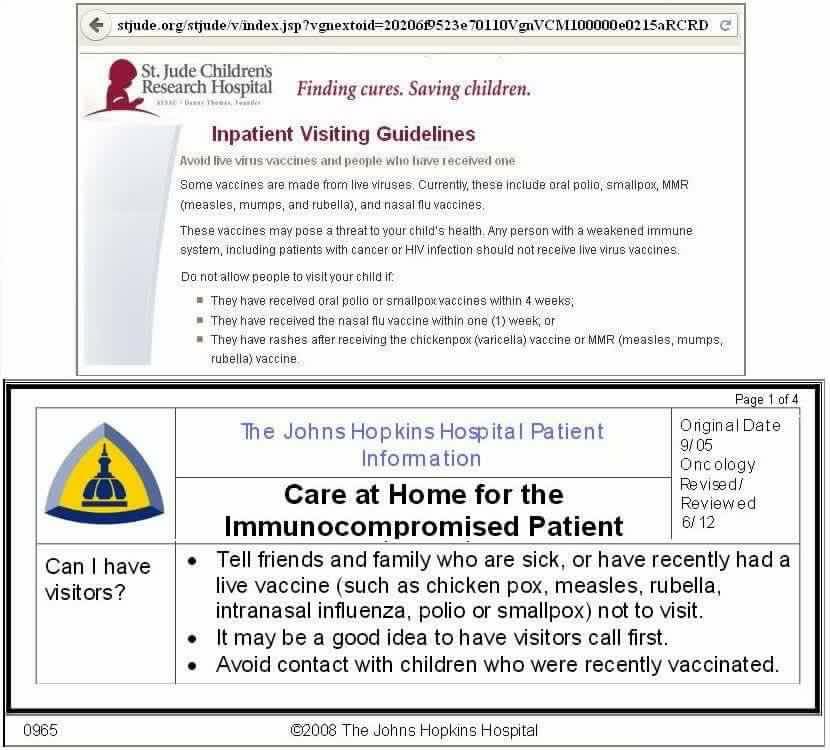The ability of recently vaccinated people to spread the disease they were vaccinated against is called "vaccine shedding". It occurs with the MMR, Chicken Pox, DTaP, Oral Polio and Rotavirus vaccines for a period of roughly 21 days following vaccination.
These shedded viruses are known as the "vaccine strain" of a virus as it is known that these viruses can mutate through the shedding process, sometimes into a harsher, less treatable strain. Below are links and images used to describe and detail vaccine shedding.
In regards to Immune Suppressed Patients, here is an Excerpt From the St. Jude Inpatient Visiting Guide:
For an immune suppressed child, the risk of infection from a live, attenuated virus vaccine is small compared to the risk of infection from exposure to someone with a vaccine-preventable disease. It is still recommended for your immune suppressed child:
- To avoid contact with a person who has a rash after recently receiving the chickenpox (varicella) vaccine.
- To avoid contact with a person who has received a intranasal flu vaccine within one week. This applies only if your child is severely immune suppressed such as in the hospital after a recent bone marrow transplant There is no similar risk with the inactivated, injectable flu vaccine.
- If a household contact (infant) has recently received rotavirus vaccination, all family members should wash hands thoroughly and frequently after contact with the vaccinated infant, especially when changing diapers.
- Household contacts not receive the Oral Polio Vaccine. Note that the oral polio vaccine is not used in the United States

